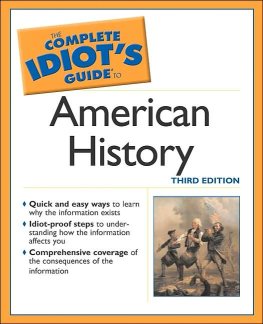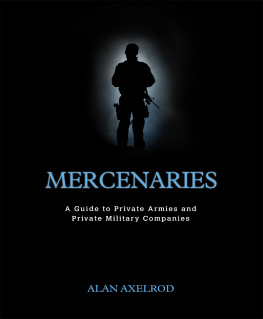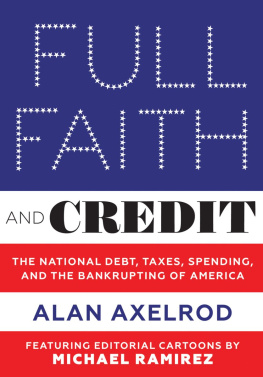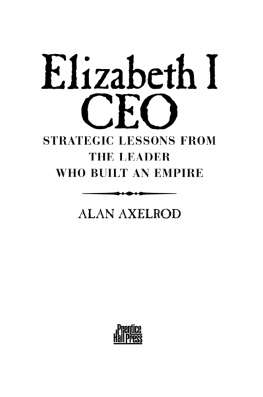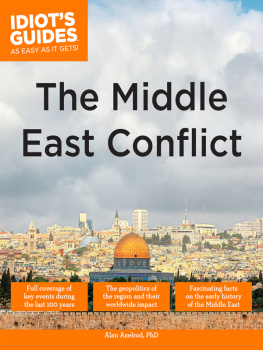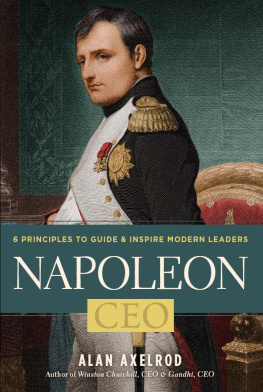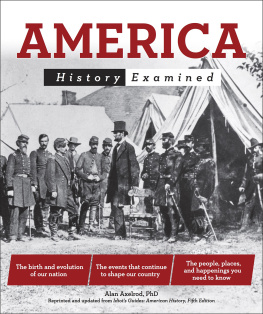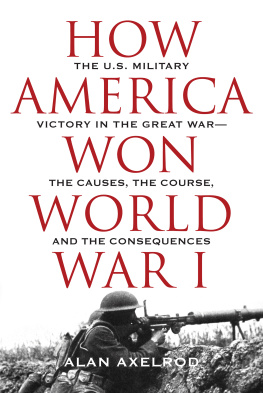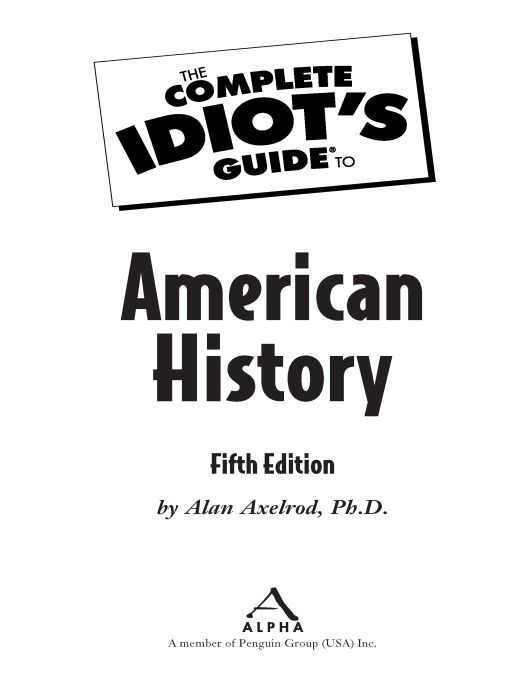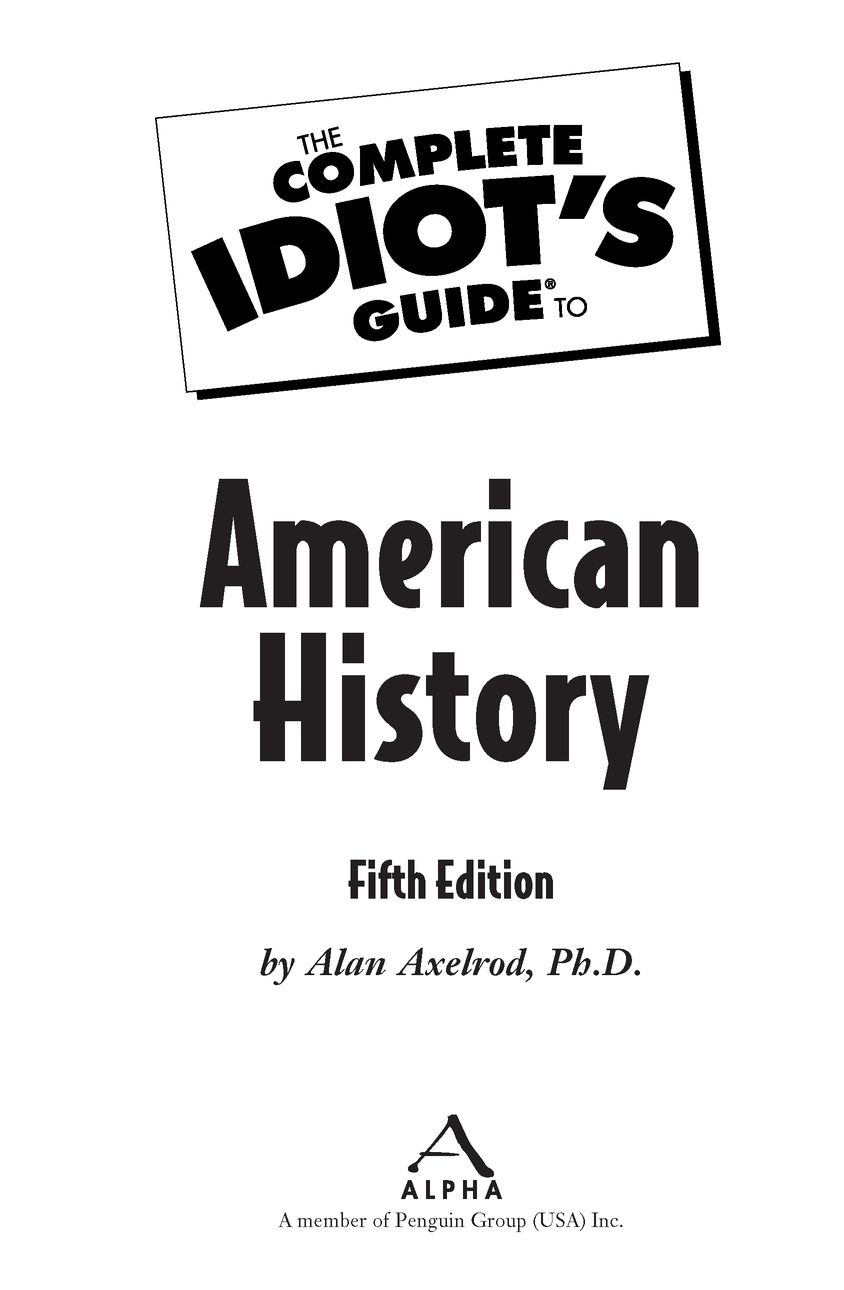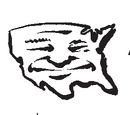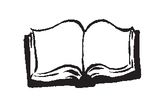Table of Contents
As ever, for Anita.
Introduction
Most of the worlds nations are placesplaces with a past, certainly, and with traditions and a heritage, but places nevertheless. The United States is different. Its a place, but its also an idea. Sure, democracy was not exactly a new idea in 1776the word democracy, meaning government by the people, was coined in ancient Greecebut no one had really tried it before. Few people thought it would actually work.
The story of gambling on an untried notion is bound to be fascinating. When you have a stake in that gamble, the story can be downright riveting. Make no mistake, you have a big stake in the story because you live in a world in which most people most of the time have been hungry, terrified, tortured, or repressed.
My purpose is to give you a reasonably rapid and comprehensive overview of American history. Although Ive tried not to grind any axes, Id be less than a living, breathing human being if I told you what Ive written is totally impartial and neutral. Obviously, a book of this length is also grossly incomplete. Walk through a bookstore or library, and thousands of books on American history will leap at you from the shelves. The great thing is that many of them are well worth reading. But you now hold in your hands a good place to start, a road map of the American story.
Part 1, The New World, takes us back some 16,500 to 45,000 years (or sonobody is sure how far back to go) to the epoch of the first immigrants, the people who crossed the long-vanished Bering land bridge from Asia to North America. The discussion then shifts to the collision of Old World and New as Europe invaded the Native American realm beginning in the fifteenth century, transforming the continent into a battlefield on which a nation was forged.
Part 2, The World Turned Upside Down, covers the American Revolution, from origins to outcome, including issues of economic, political, and spiritual independence.
Part 3, Building the House, discusses the creation of the Constitution, the War of 1812, the rise of Andrew Jackson, and the era of the common man, as well as the forced removal of the Indians from the East to the West.
Part 4, The House Divided, analyzes the causes of the Civil War, the early steps toward western expansionincluding the Mexican War, by which much of the present U.S. Southwest was acquiredthe Civil War itself, and the Reconstruction era following the Civil War.
Part 5, Rebuilding the House, covers the major period of western expansion, including the homestead movement, the building of the transcontinental railroad, the Indian Wars, the growth of the western cattle empire, and the economic and technological boom of the later nineteenth century. This part also discusses the immigrant experience, the labor movement, and the rise of urban political machines.
Part 6, World Power, charts the nations evolution as a world power (beginning with the Spanish-American War and World War I), the isolationist reaction against that evolution, the culture of the Roaring Twenties (including the heyday of Prohibition Era gangsters), the stock market crash, and the Great Depression. This part also outlines the origins of World War II and the nations fight to victory in that war, from which it emerged as a nuclear superpower.
Part 7, Superpower, covers the Cold War years, the Korean War, the Civil Rights movement, and the social revolution wrought during the administrations of John F. Kennedy and Lyndon Johnson. This part concludes with the Vietnam War.
Part 8, Identity Crisis, surveys the turbulent home front during the Vietnam era, including such high points as the Apollo 11 moon landing and such low points as the Watergate scandal. The womens liberation movement is also discussed in this part, as are the energy crisis and the economic crises of American cities and industry, which created fertile ground for the growth of Reaganomics.
Part 9, A New World Order? begins with the Reagan years and covers the end of the Cold War, including the experience of the first Gulf War. The final three chapters in this part look at recent events, including the terrorist attacks on the United States, the wars in Iraq and Afghanistan, the financial and ethical collapse of some major corporations, challenges to the economy and the environment, the division of the nation into red states and blue states, the troubled and troubling presidency of George W. Bush, and the historic campaign and election of 2008, which brought the United States its first African-American president.
Extras
In addition to the main narrative of The Complete Idiots Guide to American History, Fifth Edition, youll find other types of useful information, including capsule histories of major events, brief biographies of key people in American history, digests of important statistics, and quick definitions of historical buzzwords. Look for these features:
American Echo
These are memorable statements from historically significant figures and documents.
American Life
This feature provides biographical sketches of an eras most significant and representative figures.
Whats the Word?
This feature defines the buzzwords that defined a time and place.
Vital Statistics
Here youll find key numbers relating to an era or event, including such items as population statistics, war casualties, costs, and so on.
Remember This
Here youll read about the most significant or representative single event of an era, ranging from historical mile-stones to pop culture landmarks.
Trademarks
All terms mentioned in this book that are known to be or are suspected of being trademarks or service marks have been appropriately capitalized. Alpha Books and Penguin Group (USA) Inc. cannot attest to the accuracy of this information. Use of a term in this book should not be regarded as affecting the validity of any trademark or service mark.
Part 1
The New World
The New World was new only to Old World eyes. North America has been populated for perhaps 45,000 years, and the people Christopher Columbus misnamed Indians might well be members of the oldest identifiable human race on the planet. Except for a brief visit from Vikings about 1000 C.E., the New World and the Old remained unknown to one another until October 12, 1492, when Columbus, the prodigal son of a Genoese weaver, claimed a Caribbean island for Spain. For the next 150 years, Europeans carved up the land of the Indians. For the next 400 years, the colonists, settlers, and citizens of Euro-America fought the Indians, fought one another, and eventually managed to forge a nation. This part of the book tells the story of that long, exciting, and often tragic process.


